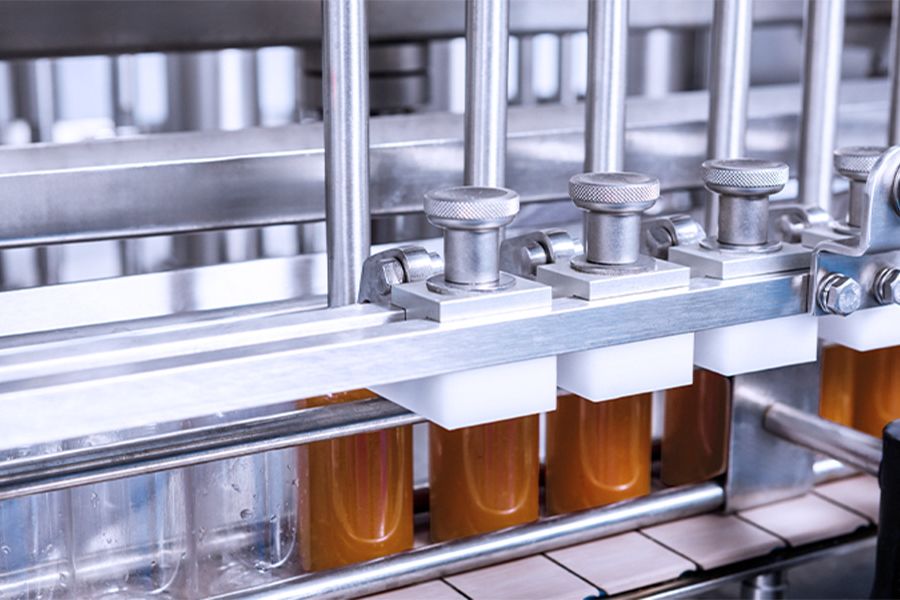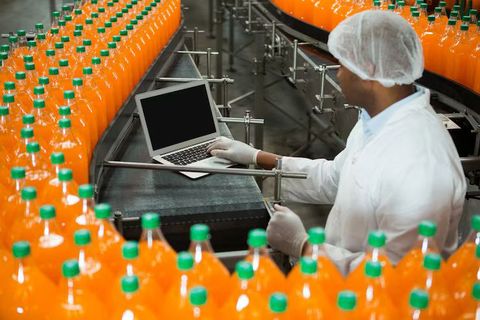Expert Insights to Understand How Filling Machines Improve Production
Filling machines are widely used across industries such as food and beverage, pharmaceuticals, cosmetics, chemicals, and packaging. These machines automate the process of measuring and dispensing products—liquids, powders, or granules—into containers with accuracy and speed. As demand for fast, efficient production continues to grow, filling machines have become essential for businesses aiming to maintain quality while meeting market requirements. This article provides a detailed, easy-to-understand overview of their purpose, importance, recent developments, rules, helpful tools, and common questions.
Filling machines are mechanical systems that automate the process of filling bottles, pouches, jars, tubes, or cans with various types of products. They were developed to minimize human effort, reduce errors, speed up production lines, and provide consistent results.

Why Filling Machines Were Created
Before automation, filling tasks were done manually, which often led to:
-
Inconsistent volume
-
Product waste
-
Slow production rates
-
Increased labour requirements
-
Higher chances of contamination
Filling machines help overcome these challenges by ensuring precise, hygienic, and efficient filling operations.
Types of Products They Handle
-
Liquids (water, juice, oil, chemicals)
-
Semi-liquids (syrups, lotions, creams)
-
Powders (flour, spices, medicine)
-
Granules (fertilizers, seeds)
-
Viscous materials (paste, gel, adhesive)
Where Filling Machines Are Used
-
Beverage factories
-
Pharmaceuticals
-
Chemical plants
-
Cosmetic production units
-
Food processing industries
-
Packaging companies
These machines support both small businesses and large manufacturing plants.
Importance – Why Filling Machines Matter Today
The role of filling machines has expanded due to rising production needs, strict quality standards, and increasing consumer expectations. They help industries maintain accuracy, hygiene, and cost efficiency—three pillars of modern manufacturing.
Who Filling Machines Benefit
-
Manufacturers
-
Packaging companies
-
Retail product producers
-
Export industries
-
Start-ups producing bottled items
Key Problems Filling Machines Help Solve
-
Inconsistent Filling: Manual methods can vary; machines deliver controlled measurements.
-
Lower Productivity: Automation significantly increases output.
-
Contamination Risks: Machines reduce human contact, helping maintain hygiene.
-
High Labour Costs: Fewer workers are needed for repetitive filling tasks.
-
Product Waste: Controlled dosing minimizes spillage and reduces raw-material loss.
Additional Advantages
-
Increased speed
-
Standardized packaging
-
Better quality control
-
Compatibility with different container shapes and sizes
-
Improved brand consistency
Filling machines enable industries to scale production more efficiently while meeting regulatory, safety, and market standards.
Recent Updates – Trends and Developments in 2024–2025
The filling machine industry has seen major advancements focused on automation, sustainability, and precision. Several updates from 2024–2025 highlight how technology continues to evolve.
Smart Sensors and IoT Integration (2024)
Manufacturers introduced sensors that monitor flow rate, viscosity, and temperature to adjust filling accuracy in real time. IoT dashboards became more common, allowing remote monitoring.
Energy-Efficient Filling Technologies (2024–2025)
Newer machines use lower power, reduce compressed-air usage, and optimize hydraulic systems—helping industries reduce operational costs.
Touchscreen and Digital Controls
User-friendly digital panels with real-time analytics became standard across many new models.
Growth in Aseptic Filling for Pharma and Food (2024)
Due to strict hygiene requirements, aseptic filling technologies expanded, especially for dairy, medicines, and ready-to-drink products.
Compact Machines for Small Industries (Early 2025)
Portable tabletop filling machines gained popularity among start-ups and small manufacturers.
Advanced Robotics in High-Speed Lines
Robotic arms and conveyors improved speed and precision in large factories, especially beverages and chemicals.
Laws or Policies Affecting Filling Machines
Filling machine operation is influenced by health, safety, environmental, and industry-specific regulations. These rules ensure product quality, workplace safety, and proper machine functioning.
Health and Safety Standards
-
Many countries require filling equipment in the food and pharmaceutical industries to follow hygiene guidelines.
-
Machines must comply with safety measures to prevent contamination, especially for consumable products.
Packaging and Label Accuracy Regulations
Governments often regulate:
-
Correct volume declaration on packaging
-
Consistency in product quantities
-
Compliance with weight and measurement laws
Environmental Guidelines
Regulations may encourage:
-
Reduced product waste
-
Energy-efficient manufacturing equipment
-
Sustainable packaging practices
Industrial Operation Rules
Depending on the region, companies may require:
-
Machine installation permits
-
Periodic inspections
-
Compliance with mechanical safety standards
These policies ensure safe, reliable, and responsible use of filling machines across industries.
Tools and Resources – Helpful Apps, Websites, and Services
Here are useful resources that support filling machine selection, operation, and management.
Industry and Machine Research Websites
-
TradeIndia – Compare filling machine models
-
IndiaMART – Supplier listings and detailed specs
-
Alibaba – Global machine sourcing
Productivity and Maintenance Tools
-
UpKeep – Equipment maintenance tracking
-
Tally ERP – Production and inventory management
-
Zoho Inventory – Material stock tracking
Engineering and Planning Tools
-
AutoCAD – Layout design for production lines
-
SolidWorks Viewer – Checking machine designs
-
Google Sheets – Maintenance and output record templates
Industry Standards and Regulatory Sources
-
Food safety guidelines (country-specific)
-
Pharmaceutical regulatory portals
-
National weights and measurement departments
These tools help businesses make informed decisions and maintain compliance.
Table: Types of Filling Machines and Their Uses
| Filling Machine Type | Suitable Products | Characteristics |
|---|---|---|
| Liquid Filling Machine | Liquids, beverages | High-speed flow control |
| Paste Filling Machine | Gels, creams, sauces | Handles viscous materials |
| Powder Filling Machine | Flour, spices, pharmaceuticals | High accuracy measurement |
| Granule Filling Machine | Seeds, grains, fertilizers | Controlled dosing |
| Volumetric Filling Machine | Liquids | Fixed volume output |
| Gravity Filling Machine | Free-flow liquids | Cost-effective |
| Piston Filling Machine | Thick materials | Precise dosing |
| Automatic Filling Machine | Mass production | Fully automated lines |
Table: Key Features to Look for in Filling Machines
| Feature | Importance |
|---|---|
| Accuracy Control | Ensures consistent filling quantity |
| Automation Level | Reduces labour and increases productivity |
| Speed Output | Determines production capacity |
| Compatibility | Works with different containers |
| Hygiene Standards | Essential for food and pharma |
| Material Quality | Improves machine lifespan |
| Maintenance Access | Reduces downtime |
FAQs – Clear and Simple Answers
1. What industries use filling machines the most?
Filling machines are widely used in food and beverage, pharmaceuticals, cosmetics, chemicals, and packaging industries due to their ability to deliver precise and efficient filling.
2. Are filling machines suitable for small businesses?
Yes. Tabletop and semi-automatic machines are widely used by small-scale manufacturers requiring moderate production capacity.
3. How much maintenance do filling machines need?
Regular cleaning, lubrication, calibration, and inspection help maintain accuracy and extend machine life.
4. Can one machine fill different types of products?
Some machines support multiple products with interchangeable nozzles and settings, but others are designed only for specific materials.
5. How does automation improve filling accuracy?
Automation uses sensors, flow meters, and digital controls to regulate filling quantity, reducing errors and increasing consistency.
Final Thoughts
Filling machines have transformed product packaging by improving accuracy, efficiency, and safety across many industries. With advancements in automation, sensors, and energy-saving technology, these machines continue to evolve to meet modern production demands. Whether used for beverages, pharmaceuticals, or cosmetics, filling machines provide essential support to businesses aiming for precise, hygienic, and scalable operations. Understanding the types, features, regulations, and recent updates helps manufacturers make informed decisions and maintain product quality in a competitive market.





